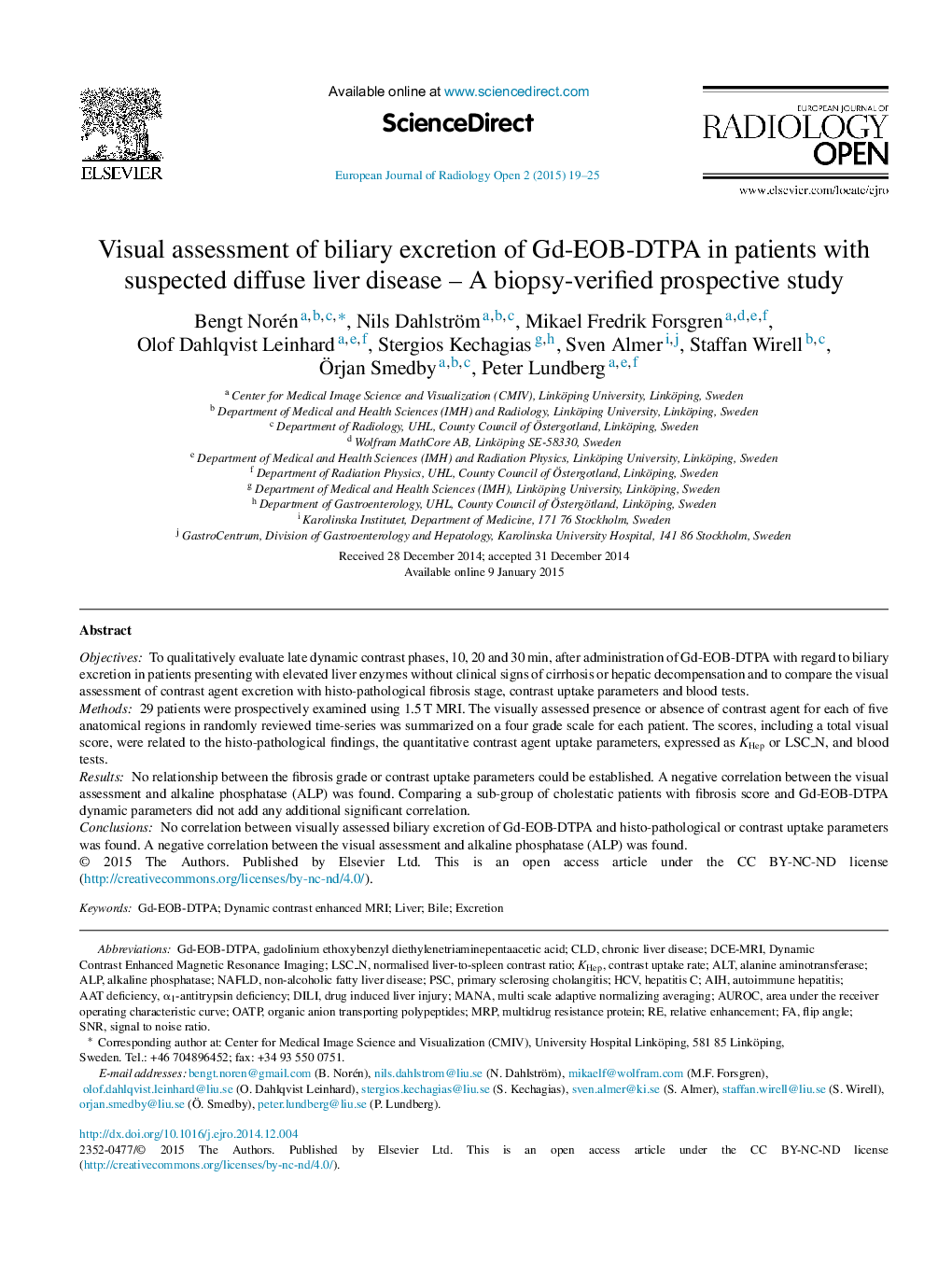| Article ID | Journal | Published Year | Pages | File Type |
|---|---|---|---|---|
| 4229700 | European Journal of Radiology Open | 2015 | 7 Pages |
•MR using hepatocyte specific contrast may potentially assess liver function.•Covariance between contrast uptake and histo-pathological scoring of liver fibrosis.•No relationship between visually assessed biliary contrast excretion and fibrosis scoring.•No relationship between visually assessed biliary excretion and contrast uptake parameters.
ObjectivesTo qualitatively evaluate late dynamic contrast phases, 10, 20 and 30 min, after administration of Gd-EOB-DTPA with regard to biliary excretion in patients presenting with elevated liver enzymes without clinical signs of cirrhosis or hepatic decompensation and to compare the visual assessment of contrast agent excretion with histo-pathological fibrosis stage, contrast uptake parameters and blood tests.Methods29 patients were prospectively examined using 1.5 T MRI. The visually assessed presence or absence of contrast agent for each of five anatomical regions in randomly reviewed time-series was summarized on a four grade scale for each patient. The scores, including a total visual score, were related to the histo-pathological findings, the quantitative contrast agent uptake parameters, expressed as KHep or LSC_N, and blood tests.ResultsNo relationship between the fibrosis grade or contrast uptake parameters could be established. A negative correlation between the visual assessment and alkaline phosphatase (ALP) was found. Comparing a sub-group of cholestatic patients with fibrosis score and Gd-EOB-DTPA dynamic parameters did not add any additional significant correlation.ConclusionsNo correlation between visually assessed biliary excretion of Gd-EOB-DTPA and histo-pathological or contrast uptake parameters was found. A negative correlation between the visual assessment and alkaline phosphatase (ALP) was found.
